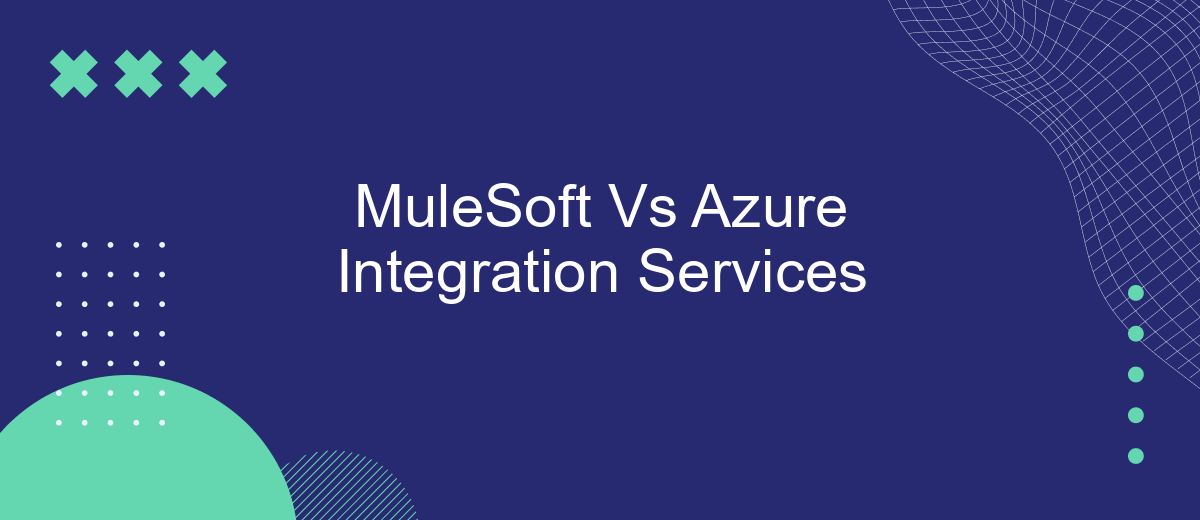So, you're swimming in a sea of apps, data sources, and systems that just…don't…talk to each other. Feeling like you're directing a symphony orchestra where everyone's playing a different tune? You're not alone. That's where integration platforms come in, acting as the conductors that bring harmony to your digital chaos. Today, we're diving into two of the big names: Azure Integration Services and MuleSoft. Think of them as the Lennon and McCartney of enterprise integration – both legendary, but with distinct styles.
Azure Integration Services: The Cloud Native Maestro
Imagine a sleek, modern penthouse overlooking the city. That's Azure Integration Services in a nutshell. It's Microsoft's cloud-based suite of integration tools, designed to live and breathe within the Azure ecosystem. Think of it as the cool kid who already speaks all the Azure languages fluently. We're talking Logic Apps, Service Bus, API Management, and Event Grid, all working together seamlessly.
Practical Tip: Already heavily invested in Azure? This is a no-brainer. The integration is incredibly smooth, and you'll likely benefit from cost efficiencies and unified management.
Azure Integration Services shines when you need to build automated workflows (thanks, Logic Apps!), reliably send messages between applications (Service Bus!), manage and secure your APIs (API Management!), and react to real-time events (Event Grid!). It's all about that cloud-native goodness, making it super scalable and resilient. Think of it as the IKEA furniture of integration – customizable, modular, and relatively easy to assemble (with the right instructions, of course!).
Fun Fact: Logic Apps uses a visual designer, making it easier for non-developers to get involved in integration projects. No coding experience? No problem!
MuleSoft: The Hybrid Harmony Expert
Now, picture a sprawling, historic villa with a modern extension. That's MuleSoft. It's all about connecting everything, regardless of where it lives – on-premises, in the cloud, or somewhere in between. MuleSoft is the seasoned traveler, fluent in many languages and comfortable in any environment. It's been around the block, integrating systems since before "cloud" was even a buzzword.
Practical Tip: Have a complex, hybrid IT landscape with legacy systems lurking in the shadows? MuleSoft is your go-to. Its robust connectors and data transformation capabilities are legendary.
MuleSoft's Anypoint Platform is a comprehensive integration platform as a service (iPaaS) known for its API-led connectivity approach. This means building reusable APIs that act as building blocks for future integrations. Think of it as LEGOs for your enterprise – snap them together to create almost anything! MuleSoft excels at handling complex data transformations and orchestrating intricate workflows across disparate systems. Plus, its API management capabilities are top-notch, providing security and governance across your entire API ecosystem.
Cultural Reference: MuleSoft's API-led approach is like building a city with well-defined roads and infrastructure. Each API is a street, allowing different applications to communicate and exchange data efficiently.
Fun Fact: MuleSoft was acquired by Salesforce in 2018, further solidifying its position as a leading integration platform.
The Showdown: Which One's Right for You?
Choosing between Azure Integration Services and MuleSoft is like picking between a Tesla and a vintage Porsche. Both are awesome, but they cater to different needs and preferences.
- Azure Integration Services: Ideal if you're already heavily invested in the Microsoft ecosystem and need a cost-effective, scalable, and cloud-native integration solution.
- MuleSoft: The champion for complex, hybrid environments with legacy systems and the need for robust API management and data transformation capabilities.
Bold text: Consider your current IT infrastructure, your integration needs, your budget, and your team's expertise. The best choice is the one that aligns with your specific requirements.
Ultimately, there’s no single "winner." It’s about finding the right tool for the job. Both platforms offer free trials, so get your hands dirty and see which one clicks with your team and your infrastructure.
Practical Tip: Don't just focus on the technology. Consider the long-term costs, the ease of maintenance, and the availability of skilled resources. Choose a platform that empowers your team and supports your business goals.
A Moment of Reflection
Integration isn't just a technical exercise; it's about connecting people, processes, and data to achieve a common goal. Just like in life, where meaningful connections enrich our experiences, seamless integration can transform your business, making it more agile, efficient, and responsive to change. So, take a deep breath, choose your integration partner wisely, and get ready to orchestrate your digital symphony!





